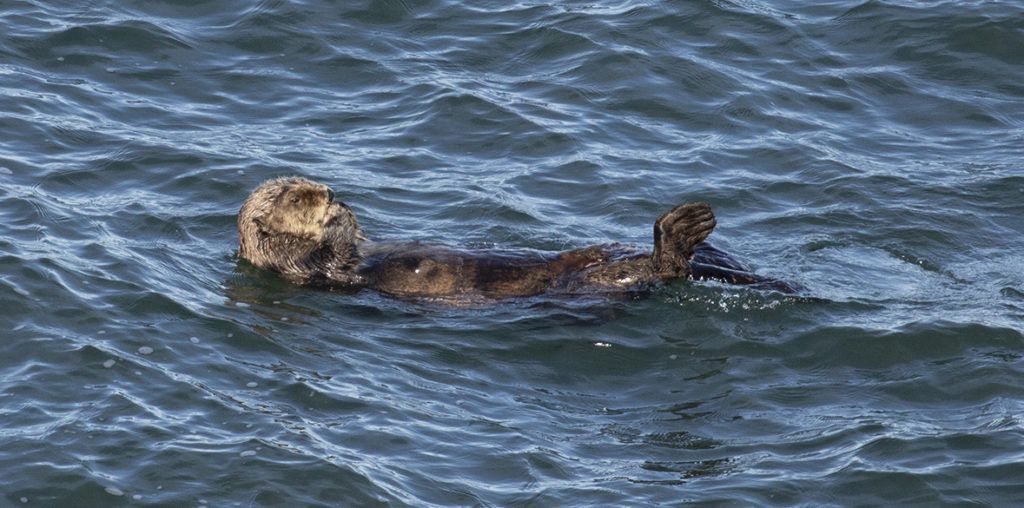
By DANA TIMS/YachatsNews.com
With few exceptions, sea otters haven’t cavorted in the waters off Oregon’s coast since being hunted to extinction during the maritime fur trade of the late 1800s.
Now, in a move that is raising eyebrows among commercial fishing interests, an effort is underway to change that by reintroducing sea otters to their historical range along parts of the West Coast, including Oregon.
Advocates acknowledge that any reintroduction program would be both costly and time-consuming. But they argue that the cultural, ecological and economic benefits of restoring otter populations could eventually pay significant dividends.
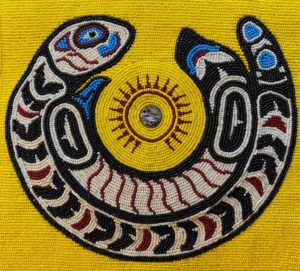
“It’s not like we’re talking about reintroducing predators that no one wants around,” said Robert Bailey, president of the Siletz-based Elakha Alliance, which formed three years ago to study and promote otter reintroduction. “Sea otters are a keystone species that are hugely beneficial to the ecosystem.”
A milestone moment for the group will take place Dec. 27, when federal biologists deliver results of a year-long feasibility study requested by Congress. The study will not include a final recommendation, but will instead chart the socioeconomic pros and cons and legal challenges involved.
“This is a very complex undertaking and we’re trying to lay out the facts and challenges associated with reintroduction,” said Michele Zwartjes, the U.S. Fish and Wildlife service field supervisor in Newport who leads the three-person feasibility study group. “I honestly don’t know what the next steps will be after that.”
Historical evidence suggests that Oregon was a transition zone between otter populations to the north and south prior to the fur trade that doomed them, she said. The last Oregon sea otter was killed in the early 20th Century.
All along, it was otter pelts that prompted Russian, French, Spanish and, later, American trappers to the West Coast. Otter fur, which contains up to 1 million hairs per square inch, is the densest in the world.
“A newspaper story from that era talked about a guy who sold an otter pelt for $500,” Bailey said. “That would be equivalent to something like $15,000 today. Otters became commodities and that was the end, right there.”
In Oregon, all that remained were the names of Otter Rock and Otter Point, along with the knowledge that six different coastal tribes had words for otters in their languages.
Reintroduction efforts in the 1970s led to reestablishment of healthy sea otter populations in southern California and north from Washington to Alaska, Zwartjes said.
A similar effort in Oregon around that time, however, was not successful.
Surveys at the time reported a rapid decline from the initial 93 otters that were reintroduced in the state in 1970. By 1981, only a single animal could be found. The failure was made worse by the decision not to tag or follow the otters to determine what ultimately happened to them.
“What we do know is that they will go where they want to go,” Zwartjes said during a sea otter science symposium in October. “We can’t ever reassure the public that otters will stay where we put them.”
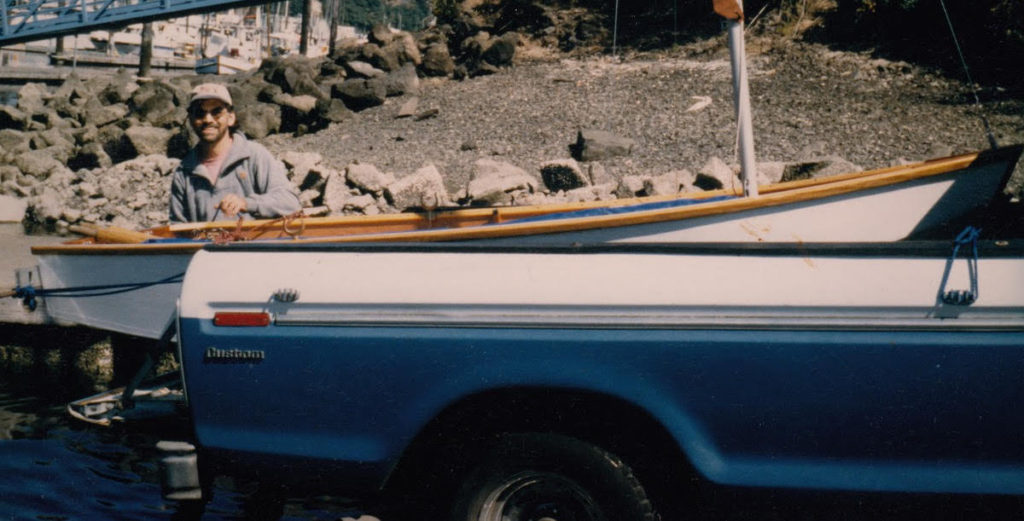
Cultural connections
The initial move to restore otter populations started more than two decades ago with Dave Hatch, a member of the Confederated Tribes of Siletz Indians. He needed just the right name for a wooden boat he and his son, Peter, built, and he settled on Elakha, a word taken from Clatsop and Chinook Indian languages.
When Hatch died in 2016, people he had worked with and inspired came together to form the Elakha Alliance. The group’s mission, according to its website, is “To restore a healthy population of sea otters to the Oregon coast and to thereby make Oregon’s marine and coastal ecosystem more robust and resilient.”
But the work is also rooted in tribal beliefs and customs derived from thousands of years of interaction with sea otters, whose excavated bones around known tribal gathering points attest to their historic importance.

“For dad,” Peter Hatch said, “it was always about otters as a focal point of the broader inter-connectedness of our land and our waters.”
A story that still haunts Hatch comes from the journal of a sailor aboard the first American vessel to poke along Oregon’s coast in August 1788. Captained by Robert Gray, the ship encountered a trading canoe of six Indians off Cascade Head in what is now Lincoln City.
The first thing they did was trade for some otter skins, Hatch said. But what the crew member also noted was that half the faces of the Indians showed they were already survivors of small pox.
“All this tangled history of people, environment, economy, it runs deep in this region,” he said. “The otters’ extinction is something we did as a people to this Oregon coast we all love, and it’s something we now have the chance to correct.”
Questions and concerns
Hatch and other alliance members are quick to note that any successful reintroduction effort will need backing and cooperation from a variety of interests, including the commercial crabbers whose placement of pots could be affected by otter populations.
The issue is made all the more important because sea otters – which are distinctly different from river otters — are protected under several strict federal laws, including the Marine Mammal Protection Act and the Endangered Species Act. Some crabbers are concerned that, even though sea otter populations expand very slowly over time, something done now could come back to bite them in future decades if those populations continue to grow far faster than anticipated.
So far, Hatch said, a spirit of cooperation appears to be holding up as reintroduction efforts move ahead.
“It’s completely understandable to have questions when a big change is on the horizon,” he said. “But I’ve been heartened to see that people are cautious and questioning, rather than opposing in a knee-jerk way.”
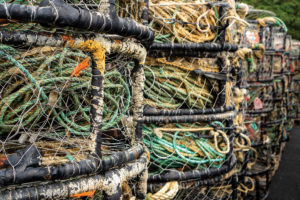
Still, the issue has grabbed the full attention of the Oregon Dungeness Crab Commission, which was established by the 1977 Legislature to promote an industry whose 320-boat fleet hauled in $60 million in crab last year.
“For us, this is potentially a very big deal,” said Tim Novotny, the commission’s assistant administrator. “That’s why we are taking it so seriously.”
The reintroduction of crab-eating sea otters in southeast Alaska, he noted, was so successful that the few hundred initial otters placed in the early 1970s had, four decades later, exploded to more than 27,000.
“That ended up decimating what had been a thriving crabbing fishery,” Novotny said. “We’re not saying the same thing would happen here, but before we make decisions that will be very difficult to change down the road, we want to make sure we address all of those questions now.”
He added that Oregon’s crabbers have already had to curtail their season and, during certain periods of the year, been required to move their pots closer to shore to avoid entangling migrating gray whales.
Crabbing in shallower waters could be a particular point of contention, he said, since that is exactly where otters, which are shallow divers, tend to feast.
He praised Elakha Alliance members for their efforts to maintain open lines of communication with crabbers, but said, “There are certainly people in our industry who see the positive things that can come from this. Our contention simply is that every issue has to be taken care of before otter one goes into the water.”
A cry for kelp
Bailey, Zwartjes and others point out that any reintroduction will not, now or in the future, likely lead to sea otters bobbing in waves clear up and down the Oregon coast.
The areas they are most likely to thrive are from Coos Bay south, where they should find suitable habitat in the huge kelp forests that, when the ocean ecosystem is in balance, flourish there.
In recent years, however, the massive die off of sea stars has led to a huge increase in sea urchins. Underwater photographs from some of those so-called “urchin barrens” show a sea floor carpeted with urchins where kelp forests once swayed.
Cue the otters, which like sea stars, also eat urchins.
Restoring a balance in these areas is important, Bailey said, in no small part because kelp forests, in addition to providing habitat for many fish species, sequester 20 times as much carbon as land-based forests.
“It’s the ecosystem services from otters that’s really driving this marine reintroduction discussion,” Bailey said. “They make it possible for kelp forests to exist.”
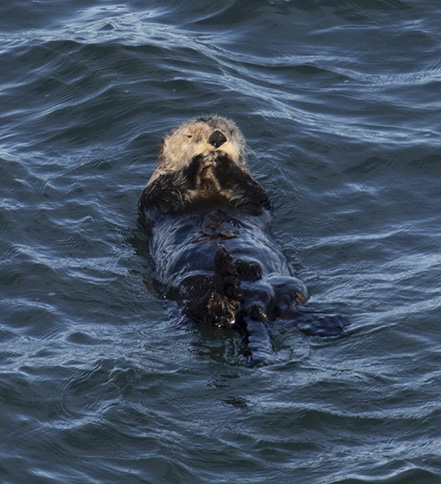
A star, briefly, is born
The allure of sea otters was on full display in November, when a lone otter delighted viewers by bobbing along the waves near the Yaquina Head Outstanding Natural Area in Newport. Television crews and local newspapers showed up to cover what turned out to be an adult male, who likely left a Washington population in search of a potential mate.
An animal believed to be the same otter hauled ashore shortly afterward and, upon a veterinarian’s examination, was found to be emaciated and bearing injuries consistent with those of a shark bite. Although initially alert, the injuries ultimately proved fatal and the otter died in early December after his third day in care at the Oregon Coast Aquarium’s wildlife rehabilitation facility.
“This otter has given all of us a glimmer as to what it would be like to have sea otters return home to the Oregon coast,” said Brittany Blades, the aquarium’s curator of marine mammals. “He has contributed to the science of understanding and caring for sea otters.”
That a single otter generated so much attention, however, provides a glimpse into how popular the animals can be. A number of otter-watching tour boat businesses operate out of Monterey Bay in California, while studies done in British Columbia have found four times as much economic gain from otter-related tourism as from the loss of shell fish consumed by otters.
For Elakha Alliance members, that momentary buzz is just one more piece explaining why a fuller consideration of reintroducing sea otters to Oregon should be pursued.
“We need to keep working with crabbers and other shell fishers to work through any concerns they have,” Bailey said. “But it’s a really historic event we are talking about and I think the whole state will benefit if it’s all done right.”
- Dana Tims is an Oregon freelance writer who contributes regularly to YachatsNews.com. He can be reached at DanaTims24@gmail.com



Just leave it alone. I certainly don’t want my tax dollars going for something that is so far down on the list of things that need to be done you would have to dive to Texas to see it.
I grew up in Santa Cruz Ca. where otters were “”reinterduced” to Monterey Bay in the 1970’s. They have since taken over, completely changed the eco-system, and rendered much of the other marine life extinct. Take a que !!!